 Looking for the best image optimization plugin for WordPress? To help you choose, we went hands-on with five popular options and ran our own tests. See the results of these tests here.
Looking for the best image optimization plugin for WordPress? To help you choose, we went hands-on with five popular options and ran our own tests. See the results of these tests here.
Yearly Archives: 2025
महाराष्ट्र की ग्राम पंचायत रोहिणी को पहला स्वर्ण पदक पुरस्कार
डिजिटल क्रांति को सुशासन का माध्यम बनाने की पहल धरातल पर यह कहां तक पहुंची है इसकी परख ग्राम पंचायत स्तर पर करने की शुरुआत अब कार्मिक, लोक शिकायत और पेंशन मंत्रालय के प्रशासनिक सुधार और लोक शिकायत विभाग करेगा।महाराष्ट्र की ग्राम पंचायत रोहिणी को पहला स्वर्ण पदक पुरस्कार
पंचायतीराज मंत्रालय के साथ मिलकर वह इस योजना को सिरे चढ़ा रहा है। किन ग्राम पंचायतों ने नागरिकों से जुड़ी सेवाओं को ई-गवर्नेंस माडल अपनाकर गतिशील, पारदर्शी और प्रभावी बनाया इस कसौटी पर देशभर की पंचायतों को कसा गया तो महाराष्ट्र के धुले जिले की आदिवासी बहुल पेसा ग्राम पंचायत रोहिणी इस श्रेणी में पहला स्वर्ण पदक जीतने वाली पंचायत बनी है।
जबकि पश्चिम त्रिपुरा जिले की मजलिशपुर ग्राम पंचायत को रजत पदक तो गुजरात के सूरत की पलसाना और ओडिशा के क्योंझर जिले की सौकती ग्राम पंचायत को ज्यूरी अवार्ड मिले हैं।
ई-गवर्नेंस के माध्यम से सुशासन की स्थिति पर सरकार की नजर
मोदी सरकार अपने 11 वर्ष पूरे होने का जश्न मना रही है। इसी को देखते हुए एक जनवरी, 2025 को निर्णय किया गया कि इस वर्ष प्रशासनिक सुधार एवं लोक शिकायत विभाग पंचायतीराज मंत्रालय के सहयोग से यह भी आकलन करेगा कि सबसे जमीनी स्तर पर नागरिक सुविधाओं के लिए उत्तरदायी ग्राम पंचायतों में ई-गवर्नेंस के माध्यम से सुशासन की क्या स्थिति है। इसके बाद देशभर की पंचायतों का सर्वेक्षण शुरू कर रिपोर्ट तैयार की गई जिसमें महाराष्ट्र की आदिवासी ग्राम पंचायत रोहिणी अपनी चमक-दमक के साथ उभरकर सामने आई है।
लोगों तक मोबाइल फोन से पहुंच रही योजनाओं की जानकारी
सरकार का दावा है कि इस गांव की साक्षरता 45 प्रतिशत है, जबकि डिजिटल साक्षरता 100 प्रतिशत पर पहुंच गई है। यहां नागरिकों से जुड़ीं 1027 सेवाओं को आनलाइन कर दिया गया है और हर घर पंचायत के पोर्टल से जुड़ा है। सरकारी योजनाओं की जानकारी बल्क मैसेज के माध्यम से प्रत्येक मोबाइल धारक तक पहुंचती है। यह महाराष्ट्र की पहली कागज रहित ग्राम पंचायत है। इसी तरह त्रिपुरा की मजलिशपुर पंचायत में शत-प्रतिशत नागरिक सेवाएं आनलाइन हैं।
जन्म-मृत्यु से लेकर दस प्रकार के प्रमाण-पत्र आनलाइन जारी किए जाते हैं। सूरत की पहसाना पंचायत में सेवाएं तो आनलाइन हैं ही, डिजिटल गवर्नेंस का पहलू यह भी है कि पूरी पंचायत में सीसीटीवी कैमरे लगे हैं, जिनकी निगरानी पंचायत कार्यालय और स्थानीय पुलिस थाने से होती है।
बच्चों के लिए स्कूल में कम्प्यूटर लैब, ई-क्लस की सुविधा है। ओडिशा की सौकती ग्राम पंचायत में हर नागरिक सेवा आनलाइन चौबीसों घंटे उपलब्ध है। इन पंचायतों को प्रशासनिक सुधार और लोक शिकायत विभाग द्वारा ई-गवर्नेंस पर आयोजित होने वाले 28वें राष्ट्रीय सम्मेलन में इलेक्ट्रानिक्स और सूचना प्रौद्योगिकी मंत्रालय के सहयोग से पुरस्कृत किया जाएगा।
Complained against Afcons Infrastructure by Drashta foundation
Special Team Report- 11 May 2025
Afcons Infrastructure company’s crusher plant is challenging the instructions of NGT, Drashta Foundation sent a report to the Nainital administration
Drashta Foundation has formed a 5-member Central Monitoring Committee and a 3-member local special team to do special study and monitoring of development works, art-culture and tourism in the villages. This team is studying the villages of Uttarakhand. In this context, a basic report is presented on the basis of the complaint of the local people of village Bhorsa.
Location- Village- Bhorsa, Post Office Amritpur, Tehsil-Haldwani, District-Nainital, Uttarakhand- 263126
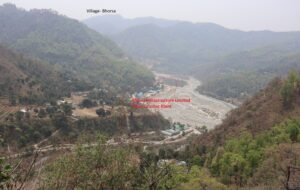 Geographical Area- Bhorsa village is located around 29.22° North latitude and 79.52° East longitude, which is near Haldwani city. This village is located at an altitude of about 424 meters above sea level. It falls in the Bhabhar region, where mountain rivers go underground and reappear in the plains of the Ganges. It is the transition zone between the foothills of the Himalayas and the plains of the Ganges. Rivers like Gaula river flow through this area, which are geographically important.
Geographical Area- Bhorsa village is located around 29.22° North latitude and 79.52° East longitude, which is near Haldwani city. This village is located at an altitude of about 424 meters above sea level. It falls in the Bhabhar region, where mountain rivers go underground and reappear in the plains of the Ganges. It is the transition zone between the foothills of the Himalayas and the plains of the Ganges. Rivers like Gaula river flow through this area, which are geographically important.
Bhorsa village is called the gateway of Kumaon. This village is in the vicinity of Nainital road and Gaula river, which makes it an important link between the hilly areas and plains of Kumaon.
Distance from the city- Bhorsa gram sabha is 15 kms. north-east of the village on paved and unpaved road.
Population- There are 119 families in Bhorsa village whose population is around 700.
What is the problem?
Afcons Infrastructure Company has illegally set up a crusher plant near a populated area, flouting environmental laws. Jamrani Dam is being constructed 1.5 km away from the populated area. In the process of setting up the stone crusher unit in the Gaula river bed, Afcons Infrastructure Company has clearly violated statutory environmental norms.
Its operation will undoubtedly increase the already severe noise and air pollution levels, causing unbearable suffering to the villagers. We are currently facing significant difficulties, and the commencement of stone crusher activities will only increase this suffering manifold. We firmly believe that the location of a stone crusher so close to a residential area would be inherently harmful as it would generate inevitable air and noise pollution. Worryingly, the distance between residential houses and the offending stone crusher unit is just a few meters.
This illegal activity involves hundreds of heavy vehicles, including trucks, dumpers and small commercial vehicles, operating from 4:30 am to midnight. As a result, the 7 km long road connecting Bhorsa gaon to Bhimtal Road has turned into a dangerous state with several large potholes, making it nearly impossible for pedestrians and vehicles alike to pass through. The resulting noise pollution has made it virtually impossible to lead a peaceful life in the area, which is further aggravated by the dangerous levels of air pollution prevailing throughout the day and night.
Number and health condition of the elderly – Around 190 of them are senior citizens who are already suffering from various ailments including asthma.
Gram Sabha has not given the No Objection Certificate-
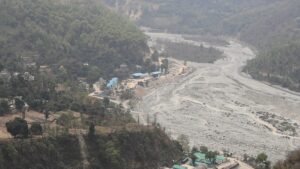 No objection from local families or landowners is necessary to set up a plant at a distance of 500 meters from the population, but Afcons Infrastructure Company has set up a crusher plant in violation of the rules and regulations of environmental protection. Therefore, the members of the Gram Sabha have not given the No Objection Certificate to Afcons Infrastructure Company.
No objection from local families or landowners is necessary to set up a plant at a distance of 500 meters from the population, but Afcons Infrastructure Company has set up a crusher plant in violation of the rules and regulations of environmental protection. Therefore, the members of the Gram Sabha have not given the No Objection Certificate to Afcons Infrastructure Company.
Violation of Gram Sabha rights
The plant set up by Afcons Infrastructure Company without the No Objection Certificate of the Gram Sabha is illegal. And this is a violation of the rights given to the Gram Sabha in Panchayati Raj as per the 11th Schedule of the Constitution.
Rules for setting up a crusher plant in Uttarakhand-
-Minimum 500 meters from public religious places, schools, educational institutions, hospitals, nursing homes, and population.
-Forest area/sanctuary: More than 1 km.
-National/State Highway- 200-500 meters.
-Rivers/water bodies: 500 metres.
Uttarakhand-specific rules
Several legal rules and regulations apply to setting up and operating crusher plants under the guidelines of the Uttarakhand Pollution Control Board (UKPCB) and the National Green Tribunal (NGT). These guidelines apply under the Environment (Protection) Act, 1986, the Air (Prevention and Control of Pollution) Act, 1981, the Water (Prevention and Control of Pollution) Act, 1974 and other related laws. Also, NGT orders and State Pollution Control Board (SPCB) regulations govern their operations. These regulations are designed to ensure environmental protection, pollution control and sustainable development.
Himalayan ecology: Uttarakhand has additional restrictions on crusher plants due to the sensitivity of the Himalayan region. For example, no industrial activity can take place in the eco-sensitive zones in Nainital and other hilly areas.
Plastic Waste Management: The Uttarakhand High Court and UKPCB have imposed strict rules on the disposal of plastic waste, which also apply to crusher plants.
Organic State: Under the policy to make Uttarakhand an organic state, there is strictness on chemical pollution, which also affects crusher plants.
Penalties and Penalties
Non-compliance: Operating without CTE/CTO or environmental clearance can attract a penalty of up to Rs 10 crore and imprisonment of up to 3 years (under the Environment Protection Act, 1986).
Polluter Pays Principle: Compensation and penalty will have to be paid for environmental damage.
Plant Closure: Illegal or non-compliant crusher plants can be closed immediately on the orders of NGT and UKPCB.
Illegal mining and legal action-
-In 2020, the High Court also banned the issuance of new licenses for stone crushers not meeting the standards.
-Illegal mining or violation of rules can lead to heavy fines and plant seizure. For example, a fine of Rs 52 lakh was imposed on 4 stone crushers and 2 mining leases in Haldwani.
Conclusion-
The sites of the crusher plant set up by Afcons Infrastructure Company have been inspected. The special team has also done video photography of the surrounding areas. Talked to the villagers and also heard their complaints. The special team found that to set up the crusher plant, the company has flouted the guidelines of NGT and UKPCB by ignoring environmental protection.
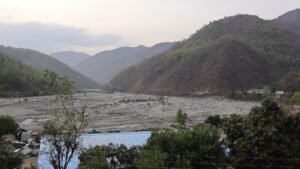 Questions based on the report-
Questions based on the report-
1- Has administrative permission been given to Afcons Infrastructure Company to set up a crusher plant in Bhorsa rural populated area? If given, then…
2- Has the administration followed the major legal rules and guidelines of (UKPCB) and National Green Tribunal (NGT) for the crusher plant in Uttarakhand?
3- Has the concerned departments of the administration checked the No Objection Certificate received from the Gram Sabha before giving license and permission to Afcons Infrastructure Company?
4- Which concerned departmental officers of the administration have inspected the crusher plant of Afcons Infrastructure Company located in Bhorsagaon and checked the mandatory rules for the license?
5- If the administration has not given permission to Afcons Infrastructure Company to set up a crusher plant in a populated area and river, will the administration take legal action against the company?
Rights of Consumers: “Consumer Protection Act, 2019”
Department of Consumer Affairs, Government of India, is continuously working for consumer protection and empowerment of consumers by enactment of progressive legislations. With a view to modernize the framework governing the consumer protection in the new era of globalization, technologies, e-commerce markets etc. Consumer Protection Act, 1986 was repealed and Consumer Protection Act, 2019 was enacted.
The Consumer Protection Act, 2019 provides for a three tier quasi-judicial machinery at District, State and Central levels commonly known as “Consumer Commissions” for protection of the rights of consumers and to provide simple and speedy redressal of consumer disputes including those related with unfair trade practices. The Consumer Commissions are empowered to give relief of a specific nature and award, wherever appropriate, compensation to consumers.
Further, in terms of Section 38 (7) of the Consumer Protection Act, 2019, every complaint shall be disposed of as expeditiously as possible and endeavour shall be made to decide the complaint within a period of three months from the date of receipt of notice by opposite party where the complaint does not require analysis or testing of commodities and within five months if it requires analysis or testing of commodities.
To serve the interest of speedy justice to the end consumers, Consumer Protection Act, 2019 states that no adjournment shall ordinarily be granted by the consumer commissions unless sufficient cause is shown and the reasons for grant of adjournment have been recorded in writing by the Commission.
“Unfair trade practice” [Section 2(47) of the Consumer Protection Act, 2019] encompasses deceptive methods such as misrepresenting product standards, falsely advertising old goods as new, claiming unverified sponsorship or benefits, offering misleading warranties, misrepresenting prices, or disparaging competitors’ goods or services. These provisions ensure accountability, transparency and fairness, safeguarding consumer interests in a dynamic marketplace.
Section 2(28) of the Consumer Protection Act, 2019 defines “misleading advertisement” in relation to any product or service, as an advertisement, which— (i) falsely describes such product or service; or (ii) gives a false guarantee to, or is likely to mislead the consumers as to the nature, substance, quantity or quality of such product or service; or (iii) conveys an express or implied representation which, if made by the manufacturer or seller or service provider thereof, would constitute an unfair trade practice; or (iv) deliberately conceals important information.
To safeguard consumers from unfair trade practices in e-commerce, the Department of Consumer Affairs has also notified the Consumer Protection (E-commerce) Rules, 2020 under the provisions of the Consumer Protection Act, 2019. These rules, inter-alia, outline the responsibilities of e-commerce entities and specify the liabilities of marketplace and inventory e-commerce entities, including provisions for customer grievance redressal.
Under the provisions of the Consumer Protection Act, 2019, the Central Consumer Protection Authority (CCPA), an executive agency, came into existence on 24.07.2020. It is designed to intervene, to prevent consumer detriment arising from unfair trade practices and to initiate class action(s), including the enforcement of recalls, refunds and return of products. Its core mandate is to prevent and regulate false or misleading advertisements which are prejudicial to the public interest.
The CCPA has issued 325 notices for violation of consumer rights, misleading advertisements and unfair trade practices etc. The CCPA has also imposed total penalties amounting to Rs. 1.19 cr. so far.
The CCPA has notified the “Guidelines for Prevention of Misleading Advertisements and Endorsements for Misleading Advertisements, 2022” on 9th June, 2022. These guidelines inter-alia provide for; (a) conditions for an advertisement to be non-misleading and valid; (b) certain stipulations in respect of bait advertisements and free claim advertisements; and, (c) duties of manufacturer, service provider, advertiser and advertising agency. These guidelines states that due diligence is required for endorsement of advertisements such that any endorsement in an advertisement must reflect the genuine, reasonably current opinion of the individual, group or organisation making such representation and must be based on adequate information about, or experience with, the identified goods, product or service and must not otherwise be deceptive.
Further to strengthen consumer protection, the CCPA enacted the “Guidelines for Prevention and Regulation of Greenwashing and Misleading Environmental Claims, 2024” (effective 15th October 2024), mandating transparency in environmental claims, and the “Guidelines for Prevention of Misleading Advertisements in the Coaching Sector, 2024” (effective 13th November 2024), addressing false claims, exaggerated success rates, and unfair practices in coaching institutes.
The CCPA issued the “Guidelines for Prevention and Regulation of Dark Patterns, 2023” on 30th November, 2023. These guidelines address and regulate 13 specific dark patterns identified in the e-commerce sector, aiming to prevent deceptive practices that mislead consumers.
Moreover, the Bureau of Indian Standards (BIS) introduced the framework on ‘Online Consumer Reviews — Principles and Requirements for their Collection, Moderation, and Publication’ on 23rd November 2022. This framework safeguards consumer interests by addressing fake and deceptive reviews in e-commerce. While the standards are voluntary, they apply to all online platforms that publish consumer reviews and are guided by principles such as integrity, accuracy, privacy, security, transparency, accessibility and responsiveness.
The Department of Consumer Affairs has been generating consumer awareness by undertaking country-wide multimedia awareness campaigns under the aegis of “Jago Grahak Jago” to reach out to every consumer across the country by utilizing traditional media like All India Radio, Doordarshan, fairs & festivals, etc. as well as social media. Through simple messages and jingles, consumers are made aware about the consumer rights, unfair trade practices, consumer issues and the mechanism to seek redressal. The Department has also been releasing grant-in-aid to States/UTs for generating consumer awareness at local level.
This information was given by the Union Minister of State for the Ministry of Consumer Affairs, Food and Public Distribution, Shri B.L. Verma in a written reply today in the Lok Sabha.
Justice BR Gavai will be the 52nd CJI of the country, President Draupadi Murmu approved
उपभोक्ताओं के अधिकार “उपभोक्ता संरक्षण अधिनियम, 2019”
भारतीय उपभोक्ताओं के अधिकार “उपभोक्ता संरक्षण अधिनियम, 2019” के तहत परिभाषित किए गए हैं। यह अधिनियम उपभोक्ताओं को विभिन्न अधिकार प्रदान करता है ताकि वे अनुचित व्यापार प्रथाओं और शोषण से सुरक्षित रहें। नीचे इन अधिकारों को संक्षेप में बताया गया है:
सुरक्षा का अधिकार: उपभोक्ताओं को उन वस्तुओं और सेवाओं से सुरक्षा का अधिकार है जो उनकी जान, स्वास्थ्य या संपत्ति के लिए हानिकारक हो सकती हैं। उदाहरण के लिए, घटिया गुणवत्ता वाले उत्पादों से बचाव।
सूचना का अधिकार: उपभोक्ताओं को किसी भी वस्तु या सेवा की गुणवत्ता, मात्रा, शुद्धता, मानक और कीमत के बारे में पूरी जानकारी प्राप्त करने का अधिकार है ताकि वे सोच-समझकर निर्णय ले सकें।
चयन का अधिकार: उपभोक्ताओं को विभिन्न विकल्पों में से अपनी पसंद की वस्तु या सेवा चुनने का अधिकार है। इसका मतलब है कि उन्हें एकाधिकार या सीमित विकल्पों के लिए मजबूर नहीं किया जा सकता।
सुनवाई का अधिकार: अगर उपभोक्ता को कोई शिकायत है, तो उसे उचित मंच (जैसे उपभोक्ता अदालत) पर अपनी बात रखने और निष्पक्ष सुनवाई का अधिकार है।
निवारण का अधिकार: उपभोक्ता को अनुचित व्यापार प्रथाओं या दोषपूर्ण वस्तुओं/सेवाओं के खिलाफ मुआवजे या नुकसान की भरपाई का अधिकार है। इसमें सामान बदलवाना, पैसे वापस लेना या हर्जाना शामिल हो सकता है।
उपभोक्ता शिक्षा का अधिकार: उपभोक्ताओं को अपने अधिकारों और जिम्मेदारियों के बारे में जागरूक होने और शिक्षित करने का अधिकार है ताकि वे शोषण से बच सकें।
कुछ महत्वपूर्ण बातें:
उपभोक्ता शिकायत निवारण: उपभोक्ता अपनी शिकायत जिला, राज्य या राष्ट्रीय उपभोक्ता आयोग में दर्ज कर सकते हैं, जो शिकायत के मूल्य और क्षेत्र के आधार पर काम करते हैं।
उदाहरण: अगर कोई दुकानदार गलत कीमत वसूलता है या नकली सामान बेचता है, तो उपभोक्ता इसके खिलाफ कार्रवाई कर सकता है।

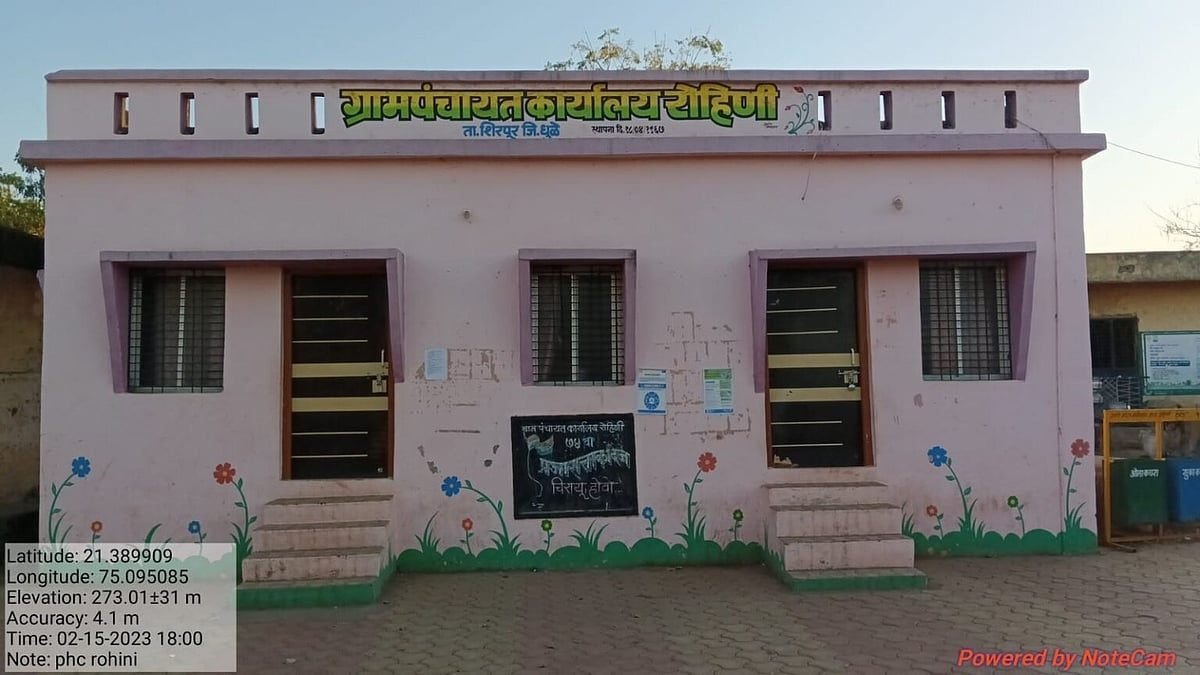



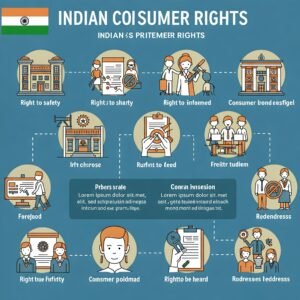 भारतीय उपभोक्ताओं के अधिकार “उपभोक्ता संरक्षण अधिनियम, 2019” के तहत परिभाषित किए गए हैं। यह अधिनियम उपभोक्ताओं को विभिन्न अधिकार प्रदान करता है ताकि वे अनुचित व्यापार प्रथाओं और शोषण से सुरक्षित रहें। नीचे इन अधिकारों को संक्षेप में बताया गया है:
भारतीय उपभोक्ताओं के अधिकार “उपभोक्ता संरक्षण अधिनियम, 2019” के तहत परिभाषित किए गए हैं। यह अधिनियम उपभोक्ताओं को विभिन्न अधिकार प्रदान करता है ताकि वे अनुचित व्यापार प्रथाओं और शोषण से सुरक्षित रहें। नीचे इन अधिकारों को संक्षेप में बताया गया है: rights to consumers so that they are protected from unfair trade practices and exploitation. These rights are briefly explained below:
Right to Safety: Consumers have the right to be protected from goods and services that may be harmful to their life, health or property. For example, protection from substandard products.
Right to Information: Consumers have the right to be fully informed about the quality, quantity, purity, standard and price of any goods or services so that they can make an informed decision.
Right to Choose: Consumers have the right to choose the goods or services of their choice from a variety of options. This means that they cannot be forced into monopolistic or limited choices.
Right to be Heard: If a consumer has a complaint, he has the right to present his case at the appropriate forum (such as a consumer court) and get a fair hearing.
Right to Redressal: A consumer has the right to seek compensation or damages against unfair trade practices or defective goods/services. This may include replacement of goods, refund or compensation.
Right to consumer education: Consumers have the right to be aware and educated about their rights and responsibilities so that they can avoid exploitation.
Some important points:
Consumer grievance redressal: Consumers can file their complaints with the District, State or National Consumer Commission, depending upon the value and area of complaint.
Example: If a shopkeeper charges wrong price or sells fake goods, the consumer can take action against him.
rights to consumers so that they are protected from unfair trade practices and exploitation. These rights are briefly explained below:
Right to Safety: Consumers have the right to be protected from goods and services that may be harmful to their life, health or property. For example, protection from substandard products.
Right to Information: Consumers have the right to be fully informed about the quality, quantity, purity, standard and price of any goods or services so that they can make an informed decision.
Right to Choose: Consumers have the right to choose the goods or services of their choice from a variety of options. This means that they cannot be forced into monopolistic or limited choices.
Right to be Heard: If a consumer has a complaint, he has the right to present his case at the appropriate forum (such as a consumer court) and get a fair hearing.
Right to Redressal: A consumer has the right to seek compensation or damages against unfair trade practices or defective goods/services. This may include replacement of goods, refund or compensation.
Right to consumer education: Consumers have the right to be aware and educated about their rights and responsibilities so that they can avoid exploitation.
Some important points:
Consumer grievance redressal: Consumers can file their complaints with the District, State or National Consumer Commission, depending upon the value and area of complaint.
Example: If a shopkeeper charges wrong price or sells fake goods, the consumer can take action against him.

